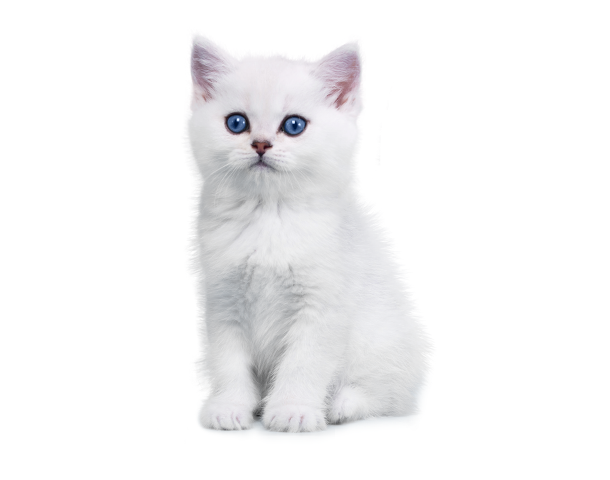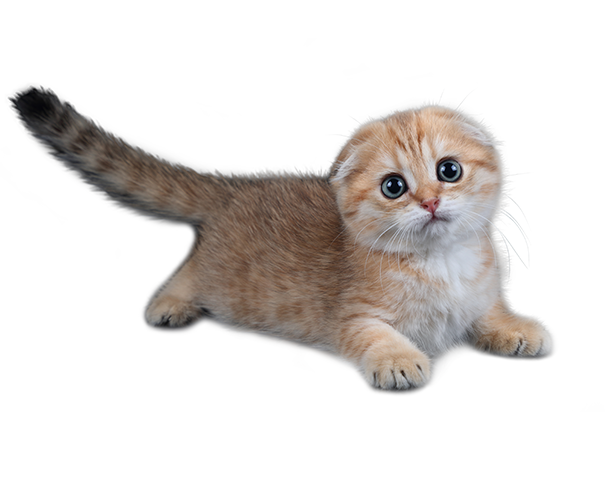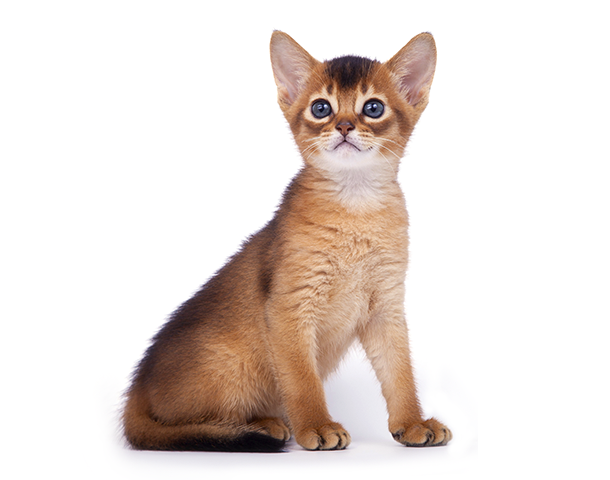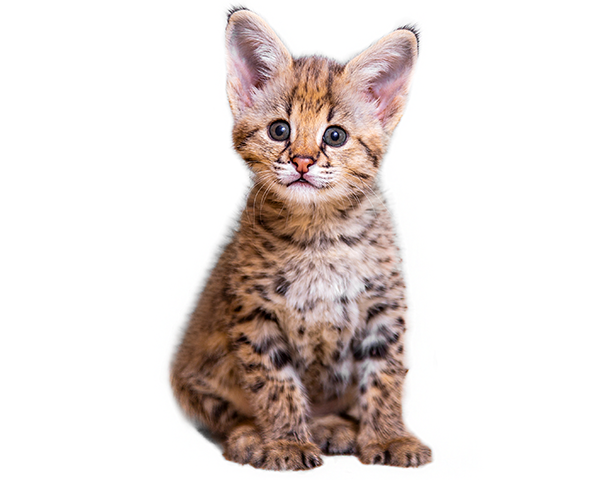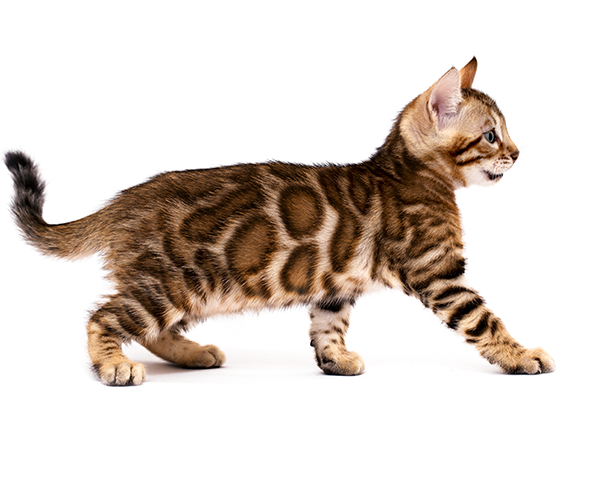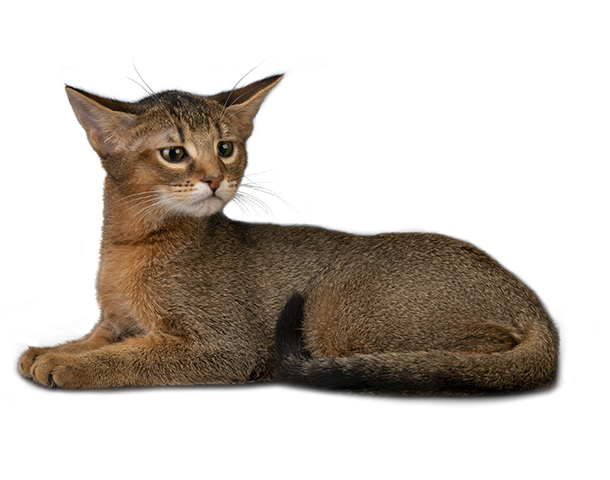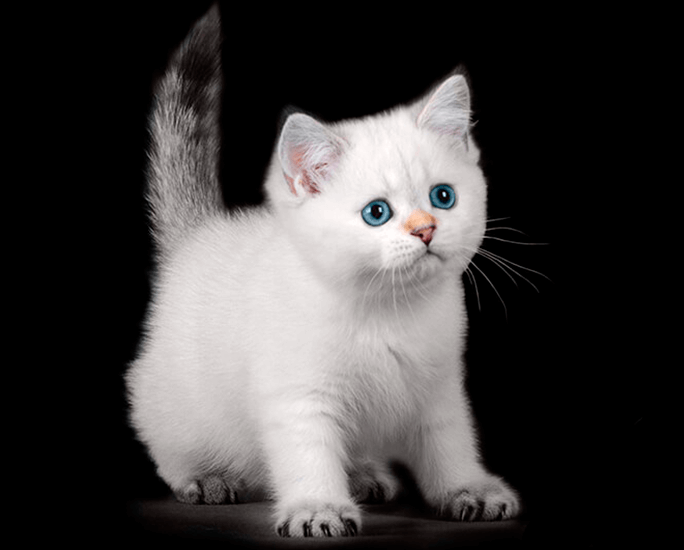History of the Bengal cat breed
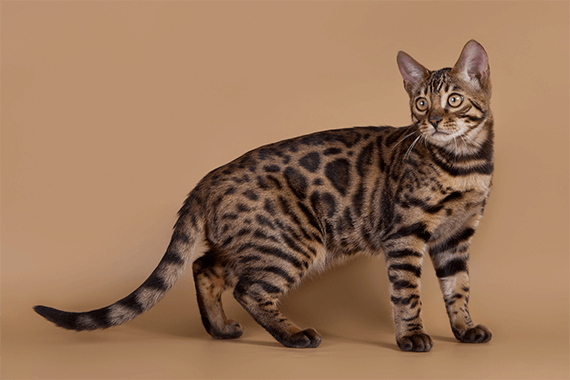
In the early 1960s, a study was conducted at the University of California on the immunity of representatives of the cat family. Among the wards were both large cats – lions, tigers, leopards, and their small counterparts, including Felis bengalensis. Small Asian leopards lived together with other domestic cats, as a result of which kittens were born from a female Felis bengalensis and a black shorthair cat. Then one of the daughters was mated with her father and got lovely spotted babies.
Research continued with numerous crossings of Felis bengalensis with American domestic cats. Jane Mill took part in these experiments, who decided to create a new breed of cats and in the 1970s took 8 females – first-generation hybrids. Initially, she added two cats to this group: a spotted one from a Los Angeles shelter and a domestic cat with orange eyes and luscious brown rosettes from a zoo in Delhi. Further, in an attempt to achieve maximum effect in the formation of Bengal cats, the first hybrids were mated with representatives of other breeds. In addition to the American Shorthair, there were Abyssinian, Burmese, Siamese (old type), Egyptian Mau and, possibly, the wild South American cat Margay.
Although modern standards clearly stipulate the proportions and appearance of a thoroughbred Bengal, as close as possible to the natural type, yet such a mosaic of ancestors has left its mark and caused minor differences in representatives of the breed originating from different nurseries, even within the United States.
In addition, besides the first Jane Mill hybrids, breeders acquired other animals, including wild Asiatic leopards born in the zoo. And these original types, in turn, were somewhat different both in size and in appearance.
In 1983, TICA began to officially register litters of Bengal cats, and in 1985 the first Bengals appeared at American shows in the class of new breeds and made an indelible impression on everyone with their external wildness.
In 1991, the standard for Bengal domestic cats was officially approved for the first time. In the future, the breed was recognized by almost all well-known felinological organizations of the New and Old Worlds.
Many breeders on all continents are engaged in Bengals. The most famous nurseries are in the USA and Canada. The very first and famous Millwood cattery was founded, of course, by Jane Mill. Many of her followers, and in Russia too, began to work with the breed, acquiring the first animals from her. It is impossible to list all those who successfully work with these cats, I will only note that in addition to North American breeders, good results have been achieved in England, Germany, Sweden, South Africa and other countries.
Difficulties encountered in creating the Bengal breed
Since animals of not only different species of the cat family, but even different subfamilies, the genotypes of which are slightly different from each other, were used to obtain the first hybrids, the first difficulties arose for the experimenters. Hybrids were assigned different numbers – from F0 in the base generation to F4, respectively, in the fourth generation from crosses between hybrids of previous gradations (from F1 to F3) with domestic cats. That is, in modern Bengals, according to various sources, from 7% to 15% of wild blood flows. The difficulty was that the male F1 hybrids (50% or more wild blood) were sterile. Offspring could only be obtained from females. The F2 generation had the same problem. Only the third generation of hybrid cats was partially capable of reproduction. And only Bengals from F4 and above became full-fledged producers. This feature, of course, slowed down the selection. But still, it was a great success. After all, spontaneous or purposeful hybridization between species of the cat family has happened before. However, the descendants of some of these crosses turned out to be sterile, regardless of gender.
Evolution over tens of thousands of years has bred the genotypes of different cats. Which sometimes makes it impossible to get kittens. But even if they are obtained, for example, in a lion with a tigress, things do not go further for the above reason. Although in many cases it could save endangered species. In principle, the creation of the Bengal breed is also a positive experience in this kind.
But there was another problem as well. To create a single-type population of animals that stably transmit their traits by inheritance, appropriate producers are needed – the so-called prepotent animals with a well-established homogeneous genotype. Without going into the subtleties of genetics, we give an elementary example. If you mate a Persian, and preferably an exotic cat of the old classic type, with a densely built domestic shorthair cat, you can sometimes get something similar to the British with a non-strict approach. However, tie such brothers and sisters together, and you will get anything. Further, with unsystematic matings between the descendants of distant generations, the type of kittens would more and more be simplified in the direction of the usual initial domestic cat.
Something would have happened to Bengal cats (given the small percentage of wild blood in hybrids of distant generations) if breeders were limited to those 8 producers with whom Jane Mill started. Even with careful selection of pairs. Therefore, it was necessary to include Felis bengalensis in other animals. They could be purchased either at the zoo or in natural habitats. But taking any wild animal out of a foreign country is not so easy. There are environmental laws and restrictions from the veterinary services. The solution to the issue could be the purchase of animals in zoos or research centers. However, say, in 1995, as the zoologist Pamela Knowles, a great enthusiast and lover of these animals, wrote, there were only 27 representatives of the species of interest in US zoos and a certain number in the hands of private owners. And, say, in the St. Petersburg Zoo there are only 2 of them – a cat and a cat. This beautiful graceful couple will probably bring kittens. But our Far Eastern cat is painted more modestly than its southern relatives, because on white snow even the most stupid game will immediately notice a hunter in a golden-yellow painted coat.
In general, there is a problem of acquiring wild parent type sires. In addition, it is necessary to create certain conditions for such cats. The reason is in the natural love of freedom and the habits inherent in a predator (even if it is friendly).
There was a third obstacle to the recognition of the new breed. The charters of many felinological organizations forbade the showing of cats that had wild blood in them, regardless of how long ago it was in their pedigree. But the exceptional virtues of Bengals, their exotic beauty broke this barrier. Only the restriction on participation in exhibitions of hybrids of the first three generations (from F1 to F3) has been preserved in order to protect participants and spectators from any surprises.
General description of the Bengal
When working on the breed, the main emphasis was on the similarity of Bengals with their wild ancestors, but friendly and gentle, like domestic cats. Therefore, any description of the appearance of a Bengal cat creates an image of a small forest predator, a kind of average image of a representative of the species Felis bengalensis.
These are muscular cats of athletic build, strong, with strong bones. Everything about them betrays excellent hunters, able to patiently track prey, jump high and quickly climb trees. They have strong paws and tenacious claws. There have been cases when Bengals jumped on a 3-meter concrete fence or climbed a smooth round iron pole. They are so dexterous that they can catch an insect on the fly with one paw.
Therefore, their body corresponds to the swiftness of their movements. It is slightly elongated; the hind legs are slightly higher than the front. The paws are large, the claws are retracted to silently sneak up on prey. The cat can sit for a long time, frozen, waiting for the moment. And even a slight movement of the tail does not betray its presence.
A small beautiful head on a long strong neck. The eyes are slightly oval, very expressive. When they hunt down prey, they are the cold eyes of the killer, slightly narrowed. Sometimes a strange primal longing suddenly appears in their eyes, as if the forest and the field, their distant homeland, are calling them.
The rather thick tail of the Bengal is kept down, like many wild cats, and it does not stand like a pipe even for joy.
Their jaws are well adapted to coarse food. The nose is large and long, and the ears are round and short, set wide and slightly tilted forward, as if alert. Bengals have high cheekbones and strong-willed chin.
But most of all, the luxurious thick and soft wool is impressive, reminiscent of natural silk to the touch. A motley bright fur coat is decorated with contrasting spots on a warm, from sandy to reddish-brown color, background.

